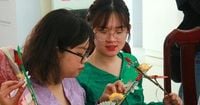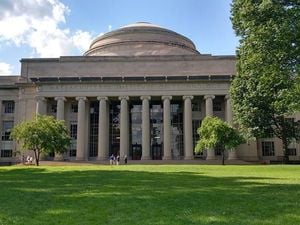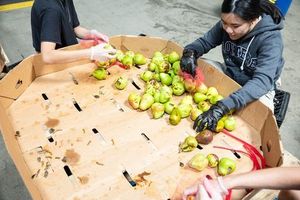In a rapidly modernizing Vietnam, the vibrant threads of tradition and culture are being carefully preserved and reimagined in both museums and hands-on workshops. From the remote mountains of Lai Chau to the ancient city of Hue, communities are finding new ways to celebrate and sustain their diverse cultural heritage, ensuring these practices continue to inspire and educate future generations.
On September 12, 2025, the Lai Chau Provincial Museum stood as a testament to this ongoing effort. According to Bao Lai Chau, the museum has become an increasingly popular destination for both locals and tourists, drawn by its extensive collection of artifacts representing 13 prominent ethnic groups, including the Thai, Dao, Mong, Kinh, Kho Mu, Lao, Lu, La Hu, and Ha Nhi. The exhibits span a wide array of cultural treasures—labor tools, traditional costumes, musical instruments, objects of folk belief, and handicrafts—each telling a unique story of the region’s social and cultural fabric.
What few visitors realize, however, is the painstaking work that goes on behind the scenes. The museum’s heritage staff labor day and night to protect these artifacts from the relentless effects of time, climate, and humidity. Their preservation methods are as varied as the artifacts themselves: bamboo and rattan objects are dusted weekly and meticulously cleaned; fabric items, including traditional garments and headscarves, are checked daily for mold or insect damage; folded textiles are aired every two weeks to prevent permanent creases and premature wear; and ancient paper artifacts are delicately dusted with soft brushes, with each page flattened and stored in dry envelopes to prevent mold and ink fading.
“I’ve been attached to this work for over 20 years,” shared Dieo Thi Thuy Hai, a museum heritage officer, in an interview with Bao Lai Chau. “Every artifact gives me a unique perspective on the cultural identity of our people, so I feel a deep responsibility to preserve them well, ensuring that our traditional values endure through time.”
But the museum’s role goes far beyond preservation. Guides and interpreters play a vital part in breathing life into these artifacts, weaving stories of daily life and traditional customs into their presentations. They introduce visitors to the fishing tools of the Thai people, the unique Cap Sac festival of the Dao, the weaving traditions of the Lu, and the haunting melodies of the Mong’s pipes and flutes. These stories not only inform but inspire a sense of pride and connection among both locals and visitors.
Nguyen Thi Thanh Huyen, a museum guide, expressed her pride in her role: “Every day, being close to these artifacts makes me prouder of the cultural identity of our ethnic groups. I’m passionate about sharing this with friends from across Vietnam and abroad, especially with the younger generation.” She also uses social media to share photos and stories about the museum’s collections, hoping to spark interest and pride in Lai Chau’s unique cultural heritage, particularly among students.
Visitors, too, are deeply moved by the museum experience. Nguyen Thanh Ham, a tourist from Dien Bien province, was especially impressed by the diversity of artifacts and the engaging storytelling of the guides. “Not only are the artifacts diverse, but the way the guides inspire us helps me and my group better understand the origins and cultural life of the ethnic groups in Lai Chau,” he told Bao Lai Chau. “In today’s fast-paced world, where people are drifting away from traditional culture, the role of the museum is more important than ever.”
The museum staff are often referred to as “cultural ambassadors,” ensuring that the traditional cultural identity of Lai Chau’s 20 ethnic groups remains vibrant and relevant. Their dedication provides both spiritual motivation and a strong foundation for the province’s ongoing development, ensuring that these cultural treasures do not simply gather dust in storage but continue to “live” in the hearts of each generation.
Meanwhile, in the ancient imperial city of Hue, traditional crafts are also being revived and celebrated in innovative ways. On September 9, 2025, a hands-on workshop brought together young participants eager to learn about the history and making of Thanh Tien paper flowers and five-colored cake boxes—two iconic symbols of Hue’s rich artisan culture. The event, covered by Tuoi Tre, was led by Phan Thi Thuy Trang, co-founder of Legend of Hue, an organization dedicated to promoting the city’s traditional heritage.
Participants were introduced to the delicate art of folding thin, naturally dyed paper from Thanh Tien village, the source of this special material. The five-colored cake box, also known as Phap Lam cake, is a striking example of Hue’s attention to detail and symbolism. The box is crafted by folding six pieces of paper—each about 20 centimeters long—into five equal squares and assembling them into a six-sided container. These boxes, containing traditional cakes like banh in, banh bo, and banh phuc linh, once graced the tables of royalty, according to legend. The vivid colors of the boxes are said to echo the aesthetics of Phap Lam enamel art, and every finished box is unique, shaped by the maker’s choices in color arrangement.
“Folding the box requires patience to make sure it’s evenly square, especially since the paper is so soft,” explained workshop participant Hai Anh. “I’m planning a trip to Hue, so I wanted to learn more about the region’s distinctive culture. The workshop helped me understand why people from Hue are so meticulous in every step of their craft.”
Thanh Tien paper flowers, another focus of the workshop, have their own storied past. As recounted by Phan Thi Thuy Trang, these flowers were once offered to the king by a mandarin from Thanh Tien village. The three large flowers represented the Confucian “three bonds” (ruler-minister, father-son, husband-wife), while the five smaller flowers symbolized the “five constants” (benevolence, righteousness, propriety, wisdom, faith). Originally created for ancestral worship, these paper flowers are replaced annually just before Lunar New Year, their vibrant colors lasting thanks to the high-quality paper and natural dyes.
Today, only about ten households in Thanh Tien village continue the craft, but demand has grown as the flowers are now produced year-round for tourists. Workshop attendees learned to assemble a complete flower—leaves, buds, three large blossoms, and five smaller ones—each arrangement reflecting the maker’s creativity and personal taste. For many, the experience was eye-opening. “At first, I joined just because a friend invited me, without much thought,” admitted participant Phuong Ngan. “But after the workshop, I was really impressed by the traditional culture. Now I understand why the flower has three large and five small blossoms. Making the flower was challenging, especially making sure all the parts fit together smoothly.”
Whether in the curated halls of a provincial museum or the lively atmosphere of a cultural workshop, these efforts underscore a broader movement across Vietnam: a determination to keep tradition alive, not as a relic of the past, but as a living, evolving force. The meticulous care of museum staff and the creative engagement of artisans and workshop leaders ensure that the country’s cultural heritage continues to inspire, educate, and connect people from all walks of life.
In both Lai Chau and Hue, tradition is not just being preserved—it’s being celebrated, shared, and given new life, one artifact and one handmade flower at a time.




